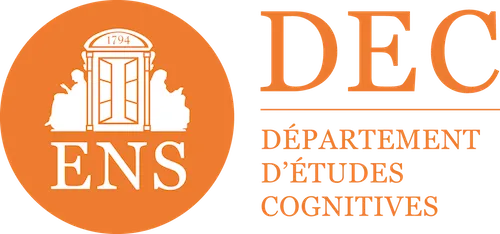

Are educational virtual agents really effective for your training?
Artificial intelligence has made a remarkable entry into the world of training. Among its most promising applications: educational virtual agents. These digital assistants are now able to support learners throughout their journey. But beyond the novelty effect, what does the research say about their real effectiveness? Cognitive sciences now offer us fairly precise and sometimes surprising answers.
The presence of a virtual agent: a significant but measured impact
Scientific research is formal: the presence of a virtual agent on the screen produces a “small but significant effect on learning”. A 2013 meta-analysis of 43 studies and more than 3000 participants demonstrated this positive effect on learning.
Why this phenomenon? The virtual agent activates what researchers call “social presence.” This feeling of presence reduces the isolation of the learner in front of the screen and increases their engagement.
But be careful, this effect is not revolutionary. This is a measured improvement that, while significant, does not radically transform learning outcomes. It is a complementary tool in the educational arsenal, not a miracle solution.
Human form or not? Effectiveness beyond anthropomorphism
Contrary to popular belief, a virtual agent does not have to look like a human to be effective. Research shows that non-anthropomorphic characters can achieve great results.
Virtual agents in the form of animals or stylized creatures have proven their educational effectiveness. The classic example of the assistant parrot in some educational software shows that the main thing is not human resemblance, but the agent's ability to create a connection with the learner.
What really matters is that the agent is seen as an intelligent and responsive entity. His ability to interact consistently with the learner takes precedence over his physical appearance.
This design flexibility opens up significant creative possibilities for instructional designers. They can adapt the agent to the learning context and the target audience without being limited to humanoid representations.
Degree of realism: avoid the valley of the strange
The level of realism of a virtual agent plays a crucial role in its acceptance by learners. Research highlights a particular phenomenon: the “uncanny valley” or “valley of the strange”.
This concept, identified by the roboticist Masahiro Mori, is perfectly applicable to educational agents. When a virtual agent becomes too realistic without achieving total perfection, it causes a feeling of discomfort while diverting the learner's attention. This negative reaction can compromise the overall learning experience.
Research suggests that an optimal balance is between overly simplistic cartoons and disturbing hyperrealism. A moderately stylized agent with expressive but clearly non-photorealistic traits generally creates the best learning conditions.
This observation raises important questions for platforms using generative AI to create virtual agents. The technical ease of producing almost realistic images should not make one forget the cognitive principles that determine educational effectiveness.

Animation: movement at the service of learning
The animation of a virtual agent is another fundamental parameter of its effectiveness. Lusk and Atkinson's research has shown that the dynamics of gestures and gaze considerably influence the perception and educational impact of the agent.
A subtle balance is needed.
An agent that is too static raises questions among the learner: “Is it functional?” , “Why isn't he reacting?”.
Conversely, excessive animation diverts attention away from instructional content and increases cognitive load.
The most effective movements are those that directly serve the learning objective. A point at an important item, a nod to validate a correct answer, or a look at a specific area on the screen - these functional animations enhance understanding without overloading attention.
Synchronizing speech and gestures is particularly important. Cognitive science shows that this coherence facilitates the integration of information and reduces the mental effort required for learning.
The role played by the agent: expert or peer?
The social positioning of the virtual agent significantly influences its educational impact. Should he present himself as an expert on the subject or as a peer counsellor?
Research reveals a result that may be counterintuitive: virtual agents generally perform better when they adopt the posture of a peer rather than that of an expert.
This effectiveness is explained by several psychological factors. A peer elicits less apprehension and performance anxiety. It creates an environment where the learner feels more comfortable exploring, trying, and even failing without judgment.
The “peer guide” model has proven to be particularly effective. The agent is positioned as a slightly more advanced companion who accompanies the learner in his discovery, rather than as an authority figure who imposes knowledge.
However, this approach deserves to be nuanced depending on the context. Elodie Garros' research suggests that certain audiences or specific areas may benefit more from an agent perceived as expert. The nature of the skill to be acquired, the profile of the learners and their cultural expectations are variables to be considered.
The agent and the learners: the importance of identification
The relationship between the virtual agent and the learner is more complex than it seems. An agent's visual characteristics - including gender and ethnic appearance - can influence their educational effectiveness.
Baylor and Kim's research analyzed the effect of “congruence” - that is, the similarity between agent and learner in terms of gender or ethnicity. The results are contrasting and nuanced.
In some cases, similarity promotes identification and reinforces commitment. A learner who recognizes characteristics in common with the agent can develop a sense of belonging that is beneficial to learning. This phenomenon is particularly observed among groups that have traditionally been underrepresented in certain fields.
However, this congruence is not universally decisive. Numerous contextual and individual factors come into play, making it difficult to establish general rules. The quality of interaction and pedagogical relevance remain the dominant factors in effectiveness.
This complexity highlights the importance of a personalized approach or, failing that, the possibility for learners to choose the appearance of their virtual agent themselves, thus promoting a sense of agency that is beneficial to learning.
How Didask can improve its product with this research
Cognitive sciences offer concrete perspectives to optimize the integration of virtual agents in a platform like Didask. Several areas for improvement are clearly emerging.
Strengthening the narrative role of the agent is a priority. An agent clearly presented at the beginning of the course, with an explicit identity and mission, acquires legitimacy that reinforces its educational impact. The learner understands why this agent is present and what its role is, thus avoiding confusion that would distract attention.
The integration of personalized audio content is another promising path. Research shows that the human voice creates stronger emotional engagement than text alone. An agent who speaks orally while maintaining a moderate visual presence optimizes the learning experience.
The scripting of the agent's interventions also makes it possible to significantly improve its effectiveness. Rather than arbitrary appearances, a coherent scenario that integrates the agent at key moments in the learning journey (points of difficulty, validation of achievements, encouragement) maximizes its positive impact.
Conclusion: the future of virtual agents in vocational training
Educational virtual agents are not just a technological trend, but tools whose effectiveness is scientifically validated - although within specific parameters. Their moderate but significant impact on learning justifies their integration into modern training systems.
The essential thing lies in balance: a visible but non-invasive presence, a moderate realism avoiding the valley of the strange, functional animation at the service of pedagogy, and a social positioning adapted to the learning context.
Based on these principles from cognitive science, Didask can design virtual agents that truly enrich the learning experience without falling into technological pitfalls. The aim is not to impress with technical sophistication, but to concretely facilitate the acquisition and retention of knowledge.
Do you want to discover how Didask's educational AI can transform your approach to vocational training?
Make an appointment directly with our eLearning experts for a demo or simply more information.












